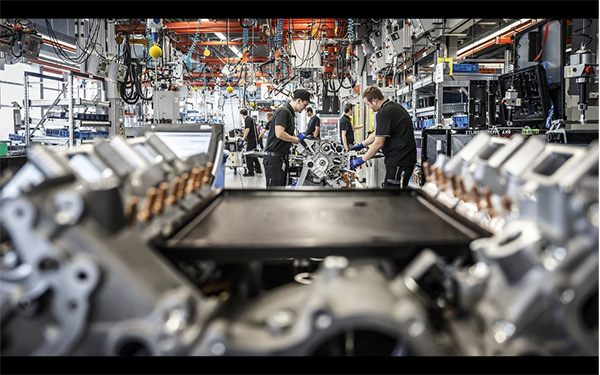Identifying and mitigating common workflow disruptions prevalent on the plant floor.
Whether manufacturing turbines or toys, the core function of the maintenance team stays the same: keep the plant, its systems and its assets running smoothly, all the while minimizing and correcting any issues that arise.
But maintaining this state of consistency is not without its own unique set of difficulties, especially given the inconsistent nature of the plant floor. And while no maintenance team is the same, there are a handful of common offenders that hinder team efficiency – time and time again. Left unattended, even the most basic of workflow challenges have the potential to manifest into prolonged problems in plant operations and team culture.
Complicating the matter, the distinct characteristics of a given manufacturing plant make identifying universal challenges a challenge in itself. Holding an organization against a backdrop of some of the most universal disruptors can help guide plant managers looking to correct the most pervasive workflow challenges.

Far too often, workers walk onto their shift on a given day without context as to what occurred the shift prior, for the assets they are responsible for. Without a complete picture as to what happened the previous shift, extra work has been created for incoming technicians, who are left to piece together what happened before they arrived.
And once established, this workflow disruptor can be difficult to correct, as the effects can snowball and become ingrained habits amongst the workforce. To overcorrect for this, the best teams treat shift handoff like a 4th down huddle on the goal line. Everyone needs to be on the same page before splitting to win the game. Diligent note-taking and reporting also help surface critical knowledge to everyone on the team, even if they missed the huddle.
How thorough are the work orders being submitted in the plant? An issue that often causes confusion and delay is when technicians receive work orders that contain little to no information about what happened. When this happens, technicians are then left to play detective and are challenged with figuring out exactly what the work order is for, and why.
Although the task of leaving work order notes can be a chore for technicians and operators, who might not have adequate time to fulfill the necessary level of detail, these remain crucial to facilitating workflow operations of the plant. Additionally, rich content like pictures and videos can provide a wealth of information for technicians that weren’t around when the problem occurred. At the very least, ensure that basic data is captured and accurate: asset name, specific problem (and location on the asset), time of the problem, the reporter, and what was done so far (if anything).
The plant floor can be a stressful, unforgiving work environment for technicians trying to manage workflow. So when it comes to the work orders themselves, finding the time required to properly create, complete and close a given work order as needed for accurate reporting, is a constant challenge for technicians.
Prioritizing real-time reporting as a KPI can change behavior on the plant floor. Ensure that technicians complete work order notes in real-time, before moving on to the next job. This may seem counter-intuitive, but carrying less information around helps most teams stay focused and become more productive. Real-time reporting also allows technicians to document how long tasks take, which makes PM scheduling more accurate and efficient. Lastly, if maintenance teams can begin to solve for inefficiencies in knowledge transfer between shifts, technicians are then left with more time to handle their work orders effectively.
For many maintenance teams, the task of arranging planned downtime with operations can be particularly difficult. This operations-maintenance interaction is critical to maintaining the plant and its systems, but it’s almost always a challenge. When priorities, processes and communications aren’t properly aligned between the teams, managing planned downtime becomes an even greater disruption for those involved.
Teams can overcome this through integrated software solutions so that everyone is on the same page. In the absence of good, integrated software, over-communication can again help Maintenance and Operations teams stay aligned. Having a maintenance team member attend an Operations stand-up, or vice versa is an effective tactic to do this.
When on the plant floor, workflow challenges can frequently arise with the sheer volume of parts technicians are responsible for. For example, in the event of unplanned maintenance, technicians must first determine the correct part to use, locate said part in the moment, while also remembering to log that part to the correct work order. Parts cribs are often difficult to navigate, and inventory is often misplaced or not available.
Simply put, it’s worth investing in the systems, processes and training to keep inventory accurate. Many CMMS systems have good inventory tracking solutions. Set clear expectations on inventory tracking, and then train your team on how to use it. Again, setting KPIs around inventory reporting typically drives the right behavior.
The roles and responsibilities of a technician are inherently complex, as they are in a constant state of motion on the job. For those technicians dealing with more complicated machinery, attempting to learn the nuance of how these machines are to be maintained, comes with its own set of difficulties.
And there’s no workaround here. This is a lifelong process, and why tribal knowledge develops in manufacturing environments. Rightfully so, technicians are proud owners of their critical role within a plant. However, without effective knowledge transfer systems in place – workflow inconsistencies will continue to arise. Documenting and transferring tribal knowledge is one of the hardest things to do on the plant floor. But for teams that invest here the entire plant benefits.
With pervasive workflow challenges affecting maintenance teams, managers must first take an assessment of their organization and its unique workflow needs. How many of these issues are pervasive in their respective plants?
Once recurring issues have been identified, managers can try some of the best practices listed above, and experiment with solutions of their own. The important part is being clear about where your team may be struggling. Often these issues go unnoticed or ignored until it’s too late. Teams should embrace the Kaizen mindset and always strive to do slightly better than the day before. As plants being increasingly digitized and connected, software solutions certainly have a role to play. Consider how a dedicated workflow solution or knowledge transfer system can reduce workflow disruptions, giving back critical time to the maintenance team.

About Bruce Kaufman
Bruce Kaufman is the co-founder and CEO of Genba, a workflow and knowledge base platform for industry workers. Bruce has 15 years of experience driving progress in multiple industries, from software to biotechnology, at both VC-backed startups and Fortune 500 blue-chip companies like DuPont and Fluke.
Scott Ellyson, CEO of East West Manufacturing, brings decades of global manufacturing and supply chain leadership to the conversation. In this episode, he shares practical insights on scaling operations, navigating complexity, and building resilient manufacturing networks in an increasingly connected world.